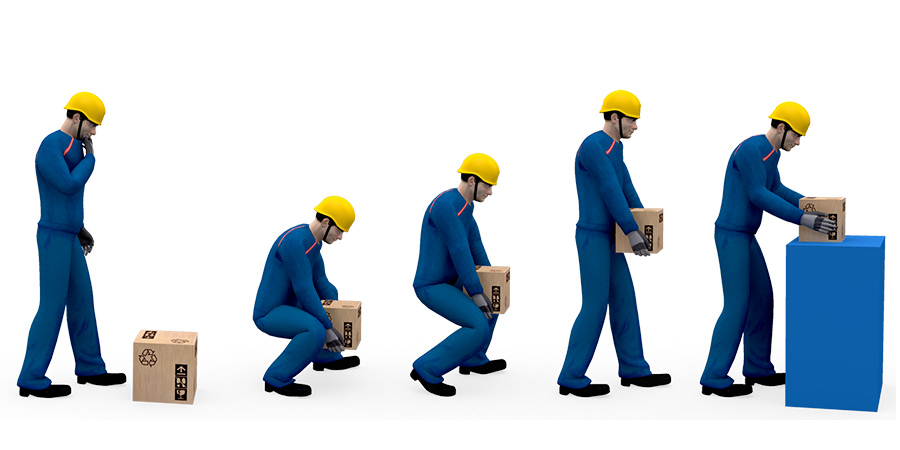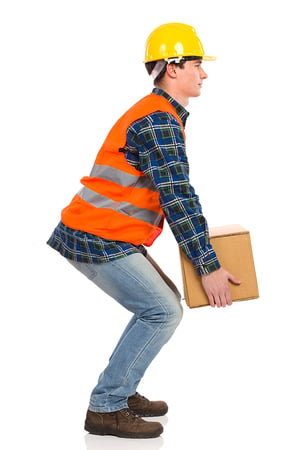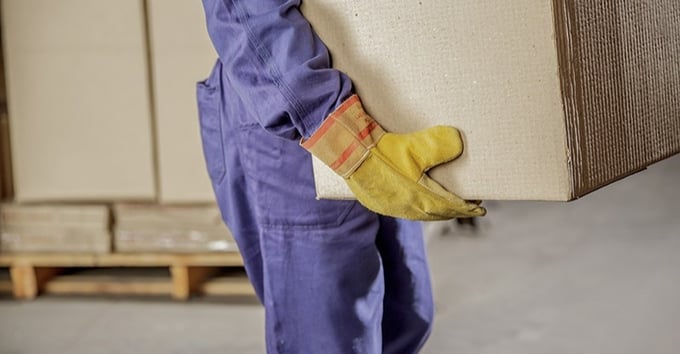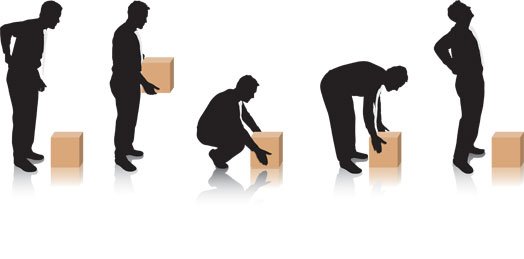Consider workers who may be more at risk of developing an MSD. Position yourself next to the load with feet flat on the floor hip-width apart and with one leg slightly forward to maintain balance.

Manual Handling Principles 5 Steps For Safer Lifting
Tighten your stomach muscles.

What should you do before handling and lifting. Know where you are taking the object before you begin. Bend to pick up and lift the load using your back hips and knees keeping your back straight as you do so. Maintain this squeeze sensation throughout the lift.
Squat to the floor by bending your knees DO NOT move your upper body. If you need to turn slowly turn with your feet. Do not twist when you lift- especially whilst the back is bent.
Use a smooth motion and lift straight up. The lift could be at a high percent of capacity. Do not twist or turn.
The risks Assessing the risks. Your feet should be shoulder-width apart with one foot slightly ahead of the other karate stance. For example lift your arms up to the ceiling twist your torso both ways squat down keeping your back.
Keep a wide base of support. The risk of injury increases when bending twisting heavy loads and awkward postures are involved. This stops operators from.
At least every 6 months if a passenger carrying device or a lifting accessory. An employer must have risk assessments on manual handling as required by the Management of Health and Safety at Work Regulations Northern Ireland. Watch where you are going.
Lifting can be taxing on your muscles and joints so make sure that your body is properly warmed up before you start to lift. Fully hydraulic lifts are ideal for solving this problem as they can lift and precisely position a load on a truck bed with ease. Effective ergonomic controls can reduce the risk and prevent injuries.
Raise and lower to the ground by bending your knees rather than bending at the waist or hips. Tuck in the chin again to make certain your back is straight before starting to lift. The Manual Handling Regulations do not set specific weight limits so the guidelines are not.
When using lifting equipment its quite common for operators to jump on and off the truck bed to move and position loads for transit. Then require the crane operator to complete it before each and every lift. If appropriate inspections by a competent person should be made at intervals between thorough examinations.
Here are a few things to avoid while lifting. Slightly bending your back hips and knees is much better than fully flexing your back stooping or your hips and knees squatting. Dont use a partial grip on an object.
Always use two hands. Equipment must not be used until defects revealed by examinations or inspections have been rectified. Keep the arms and elbows close to the body while lifting.
Squat down like a weightlifter bend your knees keep your back in its natural arch and let your legs do the lifting. Use your body weight to start the load moving and then lift by pushing up with the legs. Grip the load with the palms of your hands and your fingers.
Never hold your breath while you lift an object. Squat down bending at the hips and knees only. Use the guideline filters for lifting and lowering in Figure 1 to help you identify low-risk tasks.
Lifting handling or carrying objects at work can result in musculoskeletal injuries MSIs including sprains and strains and other injuries. Warm ups should include movements and positions that will be required of your trunk and limbs while lifting. The palm grip is much more secure.
Carry the load close to the body. This is vital to reduce the strain through your lower back and to help reduce the chance of injury. This makes full use of the strongest set of muscles.
You need to start in a good posture. It has been shown that when a lift plan is required for every lift the supervisors operators and riggers catch mistakes before they happen. Maintain a completely flat back before you begin the lift.
Its also important to make sure that you dont flex your back further during the lift. Keep the feet about shoulder-width apart and take short steps. Take hold of the object firmly with both hands.
To change direction shift your foot position and turn your whole body. Hold your shoulders level and facing the same direction as the hips at all times. The only time you might not need to do this is when you already know about the risk and how to control it.
Exhaling out when lifting an object is the proper technique to use. Keep your back straight and stand up tall. Focus on keeping your spine straight.
However this is a significant safety risk and should be limited as much as possible. This can happen if you straighten your legs before lifting the load. Follow these tips to avoid compressing the spinal discs or straining your lower back when you are lifting.
If needed put one knee to the floor and your other knee in front of you bent at a right angle half. It only takes a few minutes and could prevent a costly accident. Bend your knees and keep your back straight.
Brace your abs core by pulling the belly button into the spine creating a squeeze sensation. You should do a risk assessment for all manual tasks you think may be hazardous. Practice the lifting motion before you lift the object and think about your motion before you lift.
Your leg muscles are much more powerful than the smaller muscles in your back. Your workers can help identify potential hazards in their work. Bending your knees is the single most important thing you can do when you lift moderate to heavy objects.
Dont twist your body while carrying the load. And at least every 12 months otherwise. Do not bend the back any further whilst lifting the object- this can happen if the legs begin to straighten before lifting the object.
To lower the object bend the knees. To carry out manual handling procedures safely you should. Position your feet evenly shoulder width apart.
When carrying an object do not bend or twist at the waist.

Manual Material Handling Tips For Safe Work Performance Ask Ehs Blog

Manual Handling Dos And Don Ts At Workplace Infographic Health And Safety Poster Occupational Health And Safety Health And Safety

Steps To Reduce Manual Handling Injury Work Safety Employsure

Manual Handling At Work Good Handling Technique Hse

Manual Handling A Comprehensive Guide Safetyculture

Steps To Reduce Manual Handling Injury Work Safety Employsure

Manual Handling At Work Good Handling Technique Hse

Manual Handling Safety Airswift Safety Moment

Manual Handling An Overview Sciencedirect Topics

8 Steps To Safer Lifting Handling

Ergonomics Stanford Environmental Health Safety

Manual Handling At Work Good Handling Technique Hse
Right And Wrong Manual Handling And Lifting Of Heavy Goods Male Characters Carry Carton Boxes Correctly And Improperly Stock Illustration Download Image Now Istock

Lifting And Handling Training Regulation And Advice Shp Health And Safety News Legislation Ppe Cpd And Resources

Manual Handling Principles 5 Steps For Safer Lifting

Manual Handling Principles 5 Steps For Safer Lifting

Manual Handling Hazards And Injuries

Photo Of The Day Safe Lifting At Work Hsse World

